Pseudopaline is an opine carboxylate metallophore produced by Pseudomonas aeruginosa for harvesting divalent metals. However, the structure of pseudopaline is not fully elucidated. Herein, we report the first de novo total synthesis and isolation of pseudopaline, which allows unambiguous determination and confirmation of both the absolute and the relative configuration of the natural product. The synthesis highlights an efficient and stereocontrolled route using the asymmetric Tsuji–Trost reaction as the key step. The preliminary structure–activity relationship study indicated that one pseudopaline derivative shows comparable activity to pseudopaline. Moreover, a pseudopaline-fluorescein conjugate was prepared and evaluated, which confirmed that pseudopaline could be transported in the bacteria. Since the metal acquisition by P. aeruginosa is crucial for its ability to cause diseases, our extensive structural and functional studies of pseudopaline may pave the way for developing new therapeutic strategies such as the “Trojan horse” antibiotic conjugate against P. aeruginosa.
The first total syntheses of chaetoglines C–F via a bioinspired and divergent synthetic strategy are reported. Chaetolines C and D were obtained from the condensation of hemiacetal and tryptophan methyl ester building blocks followed by functional group transformations. The synthesis of chaetogline E employed the diastereoselective Pictet–Spengler reaction, and the tetrahydro-carboline skeleton was further utilized as a precursor for an oxidative aromatization reaction to introduce the β-carboline moiety of chaetogline F.
Protecting-group-free synthesis of (+)-ent-kauradienone and (-)-jungermannenone C has been accomplished through sequential applications of three radical-based reactions, including late-stage photoinduced skeletal rearrangements of bicyclo[3.2.1]octene ring systems. Further investigations on various terpenoids showed good functional-group tolerance and suggest that some terpenoids could also be produced via such photoinduced rearrangements pathways in nature. Our work demonstrates how paying more attention to unconventional radical mechanisms can reveal new chemistries that facilitate the synthesis of complex natural products.
A concise and enantioselective total synthesis of (+)‐jungermatrobrunin A (1), possessing a unique bicyclo[3.2.1]octene ring skeleton with an unprecedented peroxide bridge, was accomplished in 13 steps via a visible light mediated late‐stage Schenck ene reaction of (‐)‐1α,6α‐diacetoxyjungermannenone C (2). Along the way, a striking UV light induced bicyclo[3.2.1]octene ring rearrangement was applied to afford (+)‐12‐hydroxy‐1α,6α‐diacetoxy‐ent‐kaura‐9(11),16‐dien‐15‐one (4). The photoinduced divergent skeletal rearrangements strongly suggest a possible biogenetic relationship between 1, 2 and 4
We report the total synthesis of (±)-antroquinonol based on a concise and efficient route. Key features include two different strategies to install the required three contiguous stereogenic centers, which not only furnish the desired natural product but also provide natural product congeners for further biological studies.
Chen, K., Lei, X.
Current Opinion in Green and Sustainable Chemistry 2018, 11, 9–14
We have witnessed the striking advancement of C–H functionalization in organic synthesis over the past decade. This short review spotlights the very recent applications of C–H functionalization in natural product synthesis and drug synthesis. Some representative examples of natural product total synthesis facilitated by C–H functionalization are classified by C–O, C–C, C–N or C–X bond formation. Three different total syntheses are highlighted in details, in which iterative C–H functionalization strategy is involved. Another example of Merck's synthesis of anacetrapib is also discussed to briefly demonstrate the broad application of C–H functionalization strategy in process chemistry of pharmaceutical industry.
A large number of sesquiterpene quinone/hydroquinone natural products including (+)-ent-chromazonarol have been isolated and received great attention from the synthetic community. Herein, we report a nature-inspired concise synthesis of (+)-ent-chromazonarol in 4 steps from a readily available starting material. The synthesis relied on a Lewis acid mediated cyclization which correctly installed two vicinal stereocenters in one step. This highly efficient synthetic route allows us to further prepare natural product congeners for further biological studies.
A transition-metal-free oxidative N–N bond formation strategy was developed to generate various structurally interesting [1,2,4]triazolo[1,5- a]benzazoles efficiently. The mechanism of the key oxidative N–N bond formation was investigated by using an intramolecular competition reaction. Notably, the first single crystal structure was also obtained to confirm the structure of 2-aryl[1,2,4]triazolo[1,5-a]benzimidazole
Dong Q, Li X, Wang CZ, Xu S, Yuan G, Shao W, Liu B, Zheng Y, Wang H, Lei X, Zhang Z, Zhu B.
Proc Natl Acad Sci U S A. 2018, doi: 10.1073/pnas.1800505115
Epigenetic silencing can be mediated by various mechanisms, and many regulators remain to be identified. Here, we report a genome-wide siRNA screening to identify regulators essential for maintaining gene repression of a CMV promoter silenced by DNA methylation. We identified CSE1L (chromosome segregation 1 like) as an essential factor for the silencing of the reporter gene and many endogenous methylated genes. CSE1L depletion did not cause DNA demethylation. On the other hand, the methylated genes derepressed by CSE1L depletion largely overlapped with methylated genes that were also reactivated by treatment with histone deacetylase inhibitors (HDACi). Gene silencing defects observed upon CSE1L depletion were linked to its nuclear import function for certain protein cargos because depletion of other factors involved in the same nuclear import pathway, including KPNAs and KPNB1 proteins, displayed similar derepression profiles at the genome-wide level. Therefore, CSE1L appears to be critical for the nuclear import of certain key repressive proteins. Indeed, NOVA1, HDAC1, HDAC2, and HDAC8, genes known as silencing factors, became delocalized into cytosol upon CSE1L depletion. This study suggests that the cargo specificity of the protein nuclear import system may impact the selectivity of gene silencing.
Gubu, A. Li, L., Ning, Y., Zhang, X., Lee, S., Feng, M., Li, Q., Lei, X., Jo, K., Tang, X.
Chemistry-A European Journal 2018, 81(2), 298-306
Bioorthogonal metabolic DNA labeling with fluorochromes is a powerful strategy to visualize DNA molecules and their functions. Here, we report the development of a new DNA metabolic labeling strategy enabled by the catalyst-free bioorthogonal ligation using vinyl thioether modified thymidine and o-quinolinone quinone methide. With the newly designed vinyl thioether-modified thymidine (VTdT), we added labeling tags on cellular DNA, which could further be linked to fluorochromes in cells. Therefore, we successfully visualized the DNA localization within cells as well as single DNA molecules without other staining reagents. In addition, we further characterized this bioorthogonal DNA metabolic labeling using DNase I digestion, MS characterization of VTdT as well as VTdT-oQQF conjugate in cell nuclei or mitochondria. This technique provides a powerful strategy to study DNA in cells, which paves the way to achieve future spatiotemporal deciphering of DNA synthesis and functions.
-
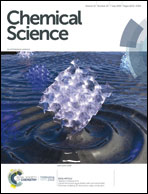
-
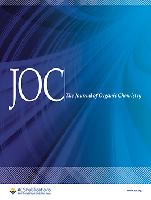
-
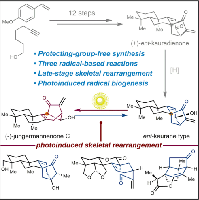
-
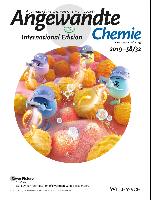
-
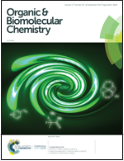
-
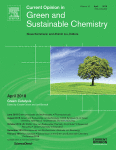
-
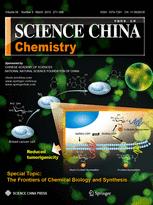
-

-
-
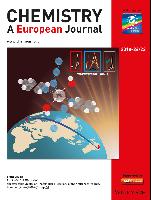
De novo synthesis, structural assignment and biological evaluation of pseudopaline, a metallophore produced by Pseudomonas aeruginosa
Jian Zhang, Tianhu Zhao, Rongwen Yang, Ittipon Siridechakorn, Sanshan Wang, Qianqian Guo,Yingjie Bai, Hong C. Shen, Xiaoguang Lei*
Chem. Sci.,2019,10, 6635
Pseudopaline is an opine carboxylate metallophore produced by Pseudomonas aeruginosa for harvesting divalent metals. However, the structure of pseudopaline is not fully elucidated. Herein, we report the first de novo total synthesis and isolation of pseudopaline, which allows unambiguous determination and confirmation of both the absolute and the relative configuration of the natural product. The synthesis highlights an efficient and stereocontrolled route using the asymmetric Tsuji–Trost reaction as the key step. The preliminary structure–activity relationship study indicated that one pseudopaline derivative shows comparable activity to pseudopaline. Moreover, a pseudopaline-fluorescein conjugate was prepared and evaluated, which confirmed that pseudopaline could be transported in the bacteria. Since the metal acquisition by P. aeruginosa is crucial for its ability to cause diseases, our extensive structural and functional studies of pseudopaline may pave the way for developing new therapeutic strategies such as the “Trojan horse” antibiotic conjugate against P. aeruginosa.
Divergent Total Synthesis of Chaetoglines C to F
Yaocheng Shi, Zhi Xu, Renxiang Tan, Xiaoguang Lei*
J. Org. Chem. 2019, 84 (13), 8766
The first total syntheses of chaetoglines C–F via a bioinspired and divergent synthetic strategy are reported. Chaetolines C and D were obtained from the condensation of hemiacetal and tryptophan methyl ester building blocks followed by functional group transformations. The synthesis of chaetogline E employed the diastereoselective Pictet–Spengler reaction, and the tetrahydro-carboline skeleton was further utilized as a precursor for an oxidative aromatization reaction to introduce the β-carboline moiety of chaetogline F.
Photoinduced Skeletal Rearrangements Reveal Radical-Mediated Synthesis of Terpenoids
Benke Hong, Weilong Liu, Jin Wang, Jinbao Wu, Yuichiro Kadonaga, Pei-Jun Cai,Hong-Xiang Lou, Zhi-Xiang Yu, Houhua Li,,* and Xiaoguang Lei*
Chem 2019, 5(6), 1671-1681
Protecting-group-free synthesis of (+)-ent-kauradienone and
(-)-jungermannenone C has been accomplished through sequential applications
of three radical-based reactions, including late-stage photoinduced skeletal
rearrangements of bicyclo[3.2.1]octene ring systems. Further investigations on
various terpenoids showed good functional-group tolerance and suggest that
some terpenoids could also be produced via such photoinduced rearrangements
pathways in nature. Our work demonstrates how paying more attention to
unconventional radical mechanisms can reveal new chemistries that facilitate the
synthesis of complex natural products.
13‐step Enantioselective Total Synthesis of (+)‐Jungermatrobrunin A
Jinbao Wu, Yuichiro Kadonaga, Benke Hong, Jin Wang, Xiaoguang Lei*
Angew. Chem. Int. Ed. 2019, 58, 10879-10883
A concise and enantioselective total synthesis of (+)‐jungermatrobrunin A (1), possessing a unique bicyclo[3.2.1]octene ring skeleton with an unprecedented peroxide bridge, was accomplished in 13 steps via a visible light mediated late‐stage Schenck ene reaction of (‐)‐1α,6α‐diacetoxyjungermannenone C (2). Along the way, a striking UV light induced bicyclo[3.2.1]octene ring rearrangement was applied to afford (+)‐12‐hydroxy‐1α,6α‐diacetoxy‐ent‐kaura‐9(11),16‐dien‐15‐one (4). The photoinduced divergent skeletal rearrangements strongly suggest a possible biogenetic relationship between 1, 2 and 4
Total Synthesis of (±)-Antroquinonol
Xiaoming Wang, Chao Du, Benke Hong, Xiaoguang Lei*
Organic & Biomolecular Chemistry, 2019, 17(7), 1754-1757
We report the total synthesis of (±)-antroquinonol based on a concise and efficient route. Key features include two different strategies to install the required three contiguous stereogenic centers, which not only furnish the desired natural product but also provide natural product congeners for further biological studies.
Recent applications of C–H functionalization in complex molecule synthesis
Chen, K., Lei, X.
Current Opinion in Green and Sustainable Chemistry 2018, 11, 9–14
We have witnessed the striking advancement of C–H functionalization in organic synthesis over the past decade. This short review spotlights the very recent applications of C–H functionalization in natural product synthesis and drug synthesis. Some representative examples of natural product total synthesis facilitated by C–H functionalization are classified by C–O, C–C, C–N or C–X bond formation. Three different total syntheses are highlighted in details, in which iterative C–H functionalization strategy is involved. Another example of Merck's synthesis of anacetrapib is also discussed to briefly demonstrate the broad application of C–H functionalization strategy in process chemistry of pharmaceutical industry.
A Nature-inspired Concise Synthesis of (+)-ent-Chromazonarol
Huang, J.; Lei, X.
Science China Chemistry
A large number of sesquiterpene quinone/hydroquinone natural products including (+)-ent-chromazonarol have been isolated and received great attention from the synthetic community. Herein, we report a nature-inspired concise synthesis of (+)-ent-chromazonarol in 4 steps from a readily available starting material. The synthesis relied on a Lewis acid mediated cyclization which correctly installed two vicinal stereocenters in one step. This highly efficient synthetic route allows us to further prepare natural product congeners for further biological studies.
Syntheses of [1,2,4]triazolo[1,5-a]benzazoles Enabled by the Transition-Metal-Free Oxidative N-N Bond Formation
Shang, E.; Zhang, J.; Bai, J.; Wang, Z.; Li, X.; Zhu, B.; Lei, X.*
Chem. Commun., 2016, 52, 7028
A transition-metal-free oxidative N–N bond formation strategy was
developed to generate various structurally interesting [1,2,4]triazolo[1,5-
a]benzazoles efficiently. The mechanism of the key oxidative N–N bond
formation was investigated by using an intramolecular competition
reaction. Notably, the first single crystal structure was also obtained
to confirm the structure of 2-aryl[1,2,4]triazolo[1,5-a]benzimidazole
Roles of the CSE1L-mediated nuclear import pathway in epigenetic silencing.
Dong Q, Li X, Wang CZ, Xu S, Yuan G, Shao W, Liu B, Zheng Y, Wang H, Lei X, Zhang Z, Zhu B.
Proc Natl Acad Sci U S A. 2018, doi: 10.1073/pnas.1800505115
Epigenetic silencing can be mediated by various mechanisms, and many regulators remain to be identified. Here, we report a genome-wide siRNA screening to identify regulators essential for maintaining gene repression of a CMV promoter silenced by DNA methylation. We identified CSE1L (chromosome segregation 1 like) as an essential factor for the silencing of the reporter gene and many endogenous methylated genes. CSE1L depletion did not cause DNA demethylation. On the other hand, the methylated genes derepressed by CSE1L depletion largely overlapped with methylated genes that were also reactivated by treatment with histone deacetylase inhibitors (HDACi). Gene silencing defects observed upon CSE1L depletion were linked to its nuclear import function for certain protein cargos because depletion of other factors involved in the same nuclear import pathway, including KPNAs and KPNB1 proteins, displayed similar derepression profiles at the genome-wide level. Therefore, CSE1L appears to be critical for the nuclear import of certain key repressive proteins. Indeed, NOVA1, HDAC1, HDAC2, and HDAC8, genes known as silencing factors, became delocalized into cytosol upon CSE1L depletion. This study suggests that the cargo specificity of the protein nuclear import system may impact the selectivity of gene silencing.
Bioorthogonal Metabolic DNA Labelling using Vinyl Thioether-Modified Thymidine and o-Quinolinone Quinone Methide
Gubu, A. Li, L., Ning, Y., Zhang, X., Lee, S., Feng, M., Li, Q., Lei, X., Jo, K., Tang, X.
Chemistry-A European Journal 2018, 81(2), 298-306
Bioorthogonal metabolic DNA labeling with fluorochromes is a powerful strategy to visualize DNA molecules and their functions. Here, we report the development of a new DNA metabolic labeling strategy enabled by the catalyst-free bioorthogonal ligation using vinyl thioether modified thymidine and o-quinolinone quinone methide. With the newly designed vinyl thioether-modified thymidine (VTdT), we added labeling tags on cellular DNA, which could further be linked to fluorochromes in cells. Therefore, we successfully visualized the DNA localization within cells as well as single DNA molecules without other staining reagents. In addition, we further characterized this bioorthogonal DNA metabolic labeling using DNase I digestion, MS characterization of VTdT as well as VTdT-oQQF conjugate in cell nuclei or mitochondria. This technique provides a powerful strategy to study DNA in cells, which paves the way to achieve future spatiotemporal deciphering of DNA synthesis and functions.